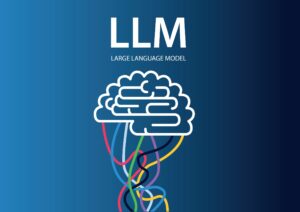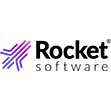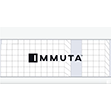

(Tee11/Shutterstock)
Companies that are running into performance walls as they scale up their vector databases may want to check out the latest update to Zilliz Cloud, a hosted version of the Milvus database from Zilliz. The database maker says the update brings a 10x boost in throughput and latency, three new search algorithms that improve search accuracy from 70% to 95%, and a new AutoIndexer that eliminates the need to manually configure the database for peak performance on each data set.
Interest in vector databases is booming at the moment, thanks in large part to the explosion in use of large language models (LLMs) to create human-like interactions, as well as increasing adoption of AI search. By caching relevant documents as vectorized embeddings in a database, a vector database can feed more relevant data into AI models (or return better results in a search), thereby lowering the frequency of hallucinations and creating a better overall customer experience.
Zilliz is among the vector databases riding the GenAI wave. As the commercial outfit behind the open source Milvus database, the Redwood City, California company is actively working to carve out the high-end segment of the vector database market. Zilliz CEO and Founder Charles Xie says the company has more than 10,000 enterprise users, and counts large enterprises like Walmart, Target, Salesforce, Intuit, Fidelity, Nvidia, IBM, PayPal, and Roblox as customers.
With today’s update to Zilliz Cloud, customers will be able to push the size and performance of their vector databases installations even more. According to Xie, customers can use the 10x performance boost to either increase the throughput or to lower the latency.
“A lot of these vector database are running queries at subsecond latency,” Xie tells BigDATAwire. “They’re running somewhere from one second to 500 milliseconds. But in terms of latency, a lot of customers may expect more real-time latency. They want the query to be running in milliseconds, basically in tens of milliseconds. They want to get the results in 10 milliseconds or in 20 milliseconds.”
Customers that need more throughput can configure the database to boost throughput. According to Xie, vector databases often deliver to 50 to 100 queries per second. With the update to Zilliz Cloud, the company is able to offer a lot more, Xie says.
“There are a lot of these online services, they want 10,000 queries per second,” he says. “If you get a super popular application, you get hundreds of millions of users, you’d probably like somewhere from 10,000 per second to even 30,000 per second. With our new release, we can support up to 50,000 queries per second.”
The performance boost comes from work Zilliz has done to expand support for parallel processor deployments. It also added support for ARM CPU deployments, to go along with its previous support for Intel and AMD CPUs and Nvidia GPUs. It’s currently working with AWS to support its ARM-based Graviton processors, Xie says.
“We are using the parallel processing instruction set of modern processors, either the ARM CPU or Intel CPU, to unlock the full potential of the parallel data execution,” Xie says.
As companies move GenAI applications from development to production, the size of their vector databases is increasing. A year ago, many vector databases had on the order of a million vector embeddings, Xie says. But at the beginning of 2023, it was becoming more common to see databases storing 100 million to several billion vectors, Xie says. Zilliz’ largest deployment currently supports 100 billion vectors, he says.
Zilliz Cloud customers will be able to get more use out of all that high-dimensional data with the addition of new search algorithms. In previous release, Zilliz Cloud supported dense vector search, including approximate nearest neighbor (ANN). Now it sports four.
“We introduced a sparse index search, or basic sparse embedding search. And we also introduced scalar search, so you can do data filtering on top of a scalar property. And also we have this multi-vector search, so basically you can put a number of vectors in a vector array, to get more context in this search,” Xie explains.
“So combining these four searches–dense vector search, sparse vector search, scalar search, and also multi-vector search–we can bring the accuracy of the search result to another level, from around 70% to 80% accuracy to 95% and above in terms of recall accuracy,” he continues. “That’s huge.”
All those new search types could add a lot more complexity to Zilliz Cloud, further putting the database out of reach of organizations that can’t afford an army of adminstrators. But thanks to the new AutoIndexer added with this release, customers don’t have to worry about getting 500 to 1,000 parameters just right to get optimal performance, because the product will automatically set configurations for the user.
“A vector database is a very complex because it’s basically managing high-dimensional data. There are a lot of parameters and configurations and so the challenges are that a lot of our customers have to hire a bunch of vector database administrators to do all this configuration, to have a lot of trial and error and difficult configurations to get the best configuration for their usage pattern for their workload,” Xie says.
“But with AutoIndex, they don’t need that anymore,” he continues. “It’s autonomous driving mode. We’re using AI algorithms behind the scene to make sure that you get the best configuration out of the box. And the other thing that it also it also beneficial for them to reduce the total cost of ownership.”
A year ago, it was common for customers to spend $10,000 to $20,000 per month on a vector database solution. But as data volumes increase, they find themselves spending upwards of $1 million a month. “They’re definitely looking for a solution that can provide a better total cost of ownership,” he says. “So that’s why cost reduction is been very important to them.”
Zilliz Cloud is available on AWS, Microsoft Azure, and Google Cloud. For more information, see www.zilliz.com.
Related Items:
Zilliz Unveils Game-Changing Features for Vector Search
How Real-Time Vector Search Can Be a Game-Changer Across Industries
September 11, 2025
- MinIO Brings Hyperscaler Economics On-Prem with AIStor Pods
- Honeycomb Introduces the Developer Interface of the Future with AI-Native Observability Suite
- AdaParse: Smart PDF Processing for Scientific AI Training
September 10, 2025
- Progress Software Launches SaaS RAG Platform for Verifiable Generative AI
- Sigma Reveals New AI, BI, and Analytics Features, Redefining Data Exploration Capabilities for Customers
- Couchbase Shareholders Approve Acquisition by Haveli Investments
- Plotly Launches Studio and Cloud with GA as Vibe Analytics Event Approaches
- Expert.ai Launches Enhanced Solutions for Digital Information Services
- ThoughtSpot Redefines Analytics with Boundaryless, Agentic Intelligence
- Perforce Expands AI Capabilities to Boost Speed and Security in Software Development
- DiffusionData Releases Diffusion 6.12
September 9, 2025
- Algolia Unlocks Clean, Contextual Data at Scale with Introduction of Intelligent Data Kit
- CTERA Announces IntelliVerse 2025: A Free Virtual Forum on Data Readiness and AI in Digital Transformation
- Pliops Showcases XDP LightningAI’s Proven Impact at AI Infra Summit 2025
- MLCommons Releases New MLPerf Inference v5.1 Benchmark Results
- Monte Carlo Launches Agent Observability to Help Teams Build Reliable AI
- Sphinx Launches with $9.5M to Redefine How AI Works with Data
- NetApp Modernizes Object Storage with Enhanced Speed, Scalability and Security
- Sourcetable Launches Superagents to Bring Autonomous AI Into the Spreadsheet
- CoreWeave Launches Ventures Group to Invest in Future of AI
- Inside Sibyl, Google’s Massively Parallel Machine Learning Platform
- What Are Reasoning Models and Why You Should Care
- Rethinking Risk: The Role of Selective Retrieval in Data Lake Strategies
- Beyond Words: Battle for Semantic Layer Supremacy Heats Up
- Software-Defined Storage: Your Hidden Superpower for AI, Data Modernization Success
- The AI Beatings Will Continue Until Data Improves
- Why Metadata Is the New Interface Between IT and AI
- Top-Down or Bottom-Up Data Model Design: Which is Best?
- How to Make Data Work for What’s Next
- What Is MosaicML, and Why Is Databricks Buying It For $1.3B?
- More Features…
- Mathematica Helps Crack Zodiac Killer’s Code
- GigaOm Rates the Object Stores
- Solidigm Celebrates World’s Largest SSD with ‘122 Day’
- Promethium Wants to Make Self Service Data Work at AI Scale
- Databricks Now Worth $100B. Will It Reach $1T?
- AI Hype Cycle: Gartner Charts the Rise of Agents, ModelOps, Synthetic Data, and AI Engineering
- Data Prep Still Dominates Data Scientists’ Time, Survey Finds
- Career Notes for August 2025
- MIT Report Flags 95% GenAI Failure Rate, But Critics Say It Oversimplifies
- Anaconda Report Links AI Slowdown to Gaps in Data Governance
- More News In Brief…
- Seagate Unveils IronWolf Pro 24TB Hard Drive for SMBs and Enterprises
- DataSnap Expands with AI-Enabled Embedded Analytics to Accelerate Growth for Modern Businesses
- Gartner Predicts 40% of Generative AI Solutions Will Be Multimodal By 2027
- Acceldata Announces General Availability of Agentic Data Management
- Hitachi Vantara Recognized by GigaOm, Adds S3 Table Functionality to Virtual Storage Platform One Object
- Transcend Expands ‘Do Not Train’ and Deep Deletion to Power Responsible AI at Scale for B2B AI Companies
- Pecan AI Brings Explainable AI Forecasting Directly to Business Teams
- SETI Institute Awards Davie Postdoctoral Fellowship for AI/ML-Driven Exoplanet Discovery
- NVIDIA: Industry Leaders Transform Enterprise Data Centers for the AI Era with RTX PRO Servers
- Ataccama Data Trust Assessment Reveals Data Quality Gaps Blocking AI and Compliance
- More This Just In…








































